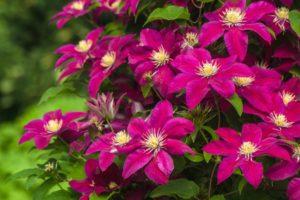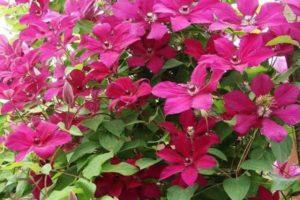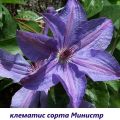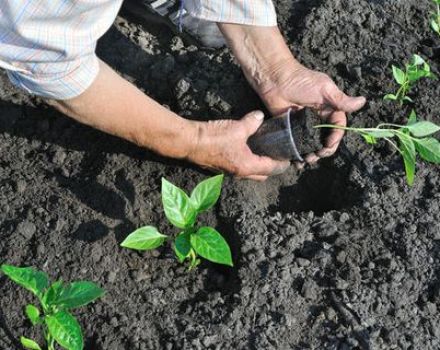Preparing clematis for the winter, when to prune and how to cover
It is advisable to insulate clematis for the winter, otherwise these plants will die from frost. Before sheltering, the vines are cut off, their stems are treated with disinfectants. Clematis are insulated with hilling, dry branches and artificial moisture-proof materials. Plants are afraid of severe frosts, but if they are not insulated for the weather, they can wither and rot.
Content
- 1 Stages of preparing clematis for winter
- 2 Pruning clematis for the winter, depending on the group
- 3 Features of the shelter of clematis
- 4 How to prepare a clematis planting site for wintering
- 5 Treatment of plants from pests
- 6 How to unhook the vines from the support
- 7 Methods for warming plants for the winter
- 8 How to process clematis for the winter
- 9 Clematis care in winter
- 10 Different regions and shelter of clematis
- 11 Taking shelter in spring
Stages of preparing clematis for winter
Clematis are thermophilic liana plants that bloom in summer. In autumn, with the arrival of cold weather, their life processes slow down. Clematis are preparing for hibernation. However, plants cannot do without human help. After all, these vines come from warm climatic zones, and in a frosty winter they can freeze and die.
Stages of preparation for the winter cold:
- pruning according to variety or group;
- processing of stems and soil;
- insulation of shoots.
Depending on the variety or group, the branches of the plants are cut by 10-20 centimeters or completely cut off, leaving hemp 20-30 centimeters high at the surface of the earth. Pruning takes place from October to November.
Having cut off all unnecessary stems, the remaining branches are removed from the support, carefully twisted and laid near the root on the ground on the litter.
If in winter the air temperature drops below 5 degrees of frost, clematis must be covered from above. Plants in which all shoots are completely cut off are also insulated before the onset of the winter cold.
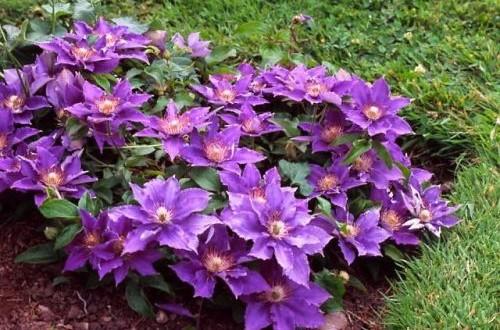
Before covering clematis, bushes and the ground around them, it is advisable to treat with Fundazol solution (20 grams per 10 liters of water). The stem itself must be sprinkled high with soil mixed with sand, peat and wood ash. Then the clematis is insulated with mulch and waterproof material.
Pruning clematis for the winter, depending on the group
Plants are divided into 3 groups.Each type of clematis needs pruning before wintering. The branches must be cut correctly. Indeed, the full development of vines and abundant flowering in the next season depends on this.
Pruning is sanitary, formative and winter pruning. Sanitary is the removal of dry and diseased branches from a healthy main stem. Formative - cutting off excess shoots in order to improve development and prolong flowering. Winter pruning is carried out in order to prepare clematis for wintering and protect it from frost.
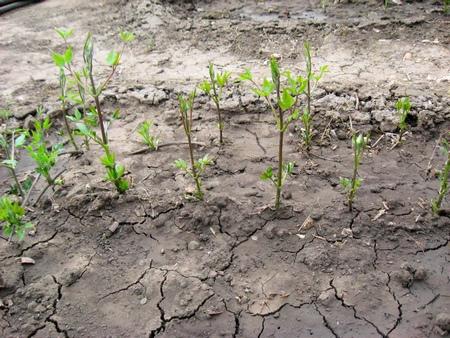
In September, dried leaves are slowly removed from the stems, since they themselves do not fall off. After removing the leaves, the twigs of clematis are pruned. Pruning is carried out in late October and early November, in dry, calm weather.
Pruning clematis of the first group for the winter
Clematis of this variety bloom only on the shoots of the previous year. Minimal pruning is recommended for them. The upper branches of the vine are slightly shortened by 20 centimeters. The length of the stems is adjusted depending on the support to which they are attached. It is important to preserve the old shoots, because they will bloom next season. During pruning for the winter, weak and dried stems are removed.
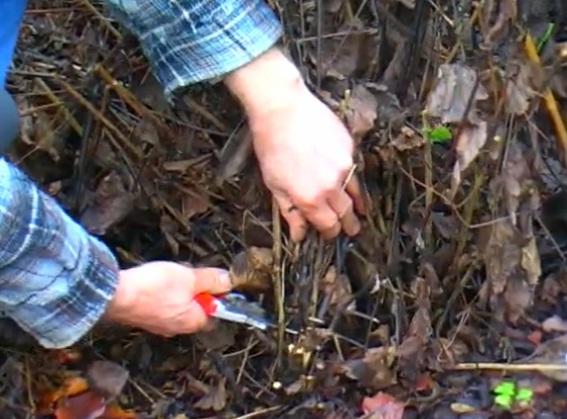
Pruning clematis of the second group for the winter
Clematis of this species bloom in early summer on old shoots, and at the end - on young ones. Medium pruning is recommended for these. Old branches are slightly shortened at a distance of 150 centimeters from the ground, young ones are not touched at all. More intensive pruning, aimed at rejuvenating the plant, is carried out every 5 years.
If the bush is only one year old, then before winter its stem that has grown over the summer is greatly shortened, leaving a stem 30 centimeters long above the ground.
Pruning clematis of the third group for the winter
Clematis of this group bloom at the very end of summer, on young twigs that have grown in the current season. Before wintering, all plant stems are completely cut off. Leave only low stalks (30 centimeters above the ground) with three pairs of buds.
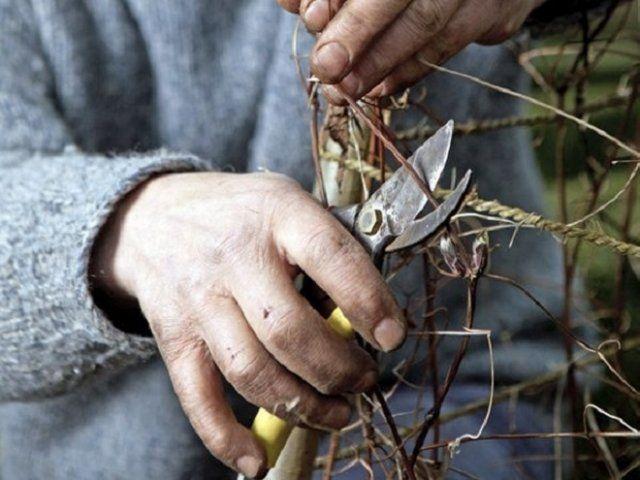
Universal pruning of clematis
If gardeners cannot determine which group their clematis belongs to, it is recommended to carry out universal pruning. In the first year of life, all types of vines are pruned in the same way - the grown stems are completely cut off, leaving shoots 30 centimeters long with a pair of buds on them. If you remove young twigs from a plant in the first year of life, then later it will grow stronger. Clematis will begin to bush, and lateral stalks will appear.
How is universal pruning done:
- all stems are divided into 3 parts;
- the first part is cut off at a distance of 30 centimeters from the ground;
- the second part is cut so that the stems are 1 meter long;
- the third part is not touched, only slightly shortened from above (by 10-20 centimeters).
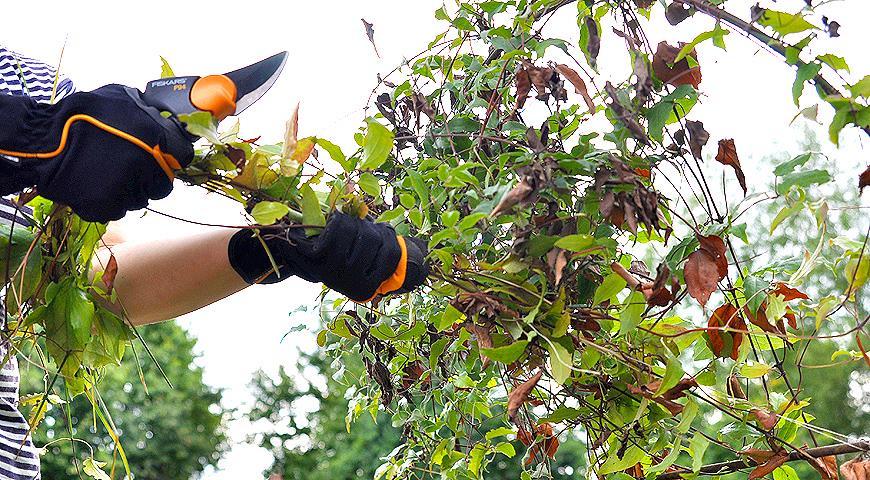
In the new season, with the beginning of the growth and development of plants, you need to see which part will grow better, and then bloom. The next autumn pruning is recommended taking into account the flowering results of the stems cut in different ways. Bushes can be trimmed to different lengths from time to time. Thus, the plant will gradually rejuvenate.
Features of the shelter of clematis
The plants are covered in early November. Shelter is carried out only after trimming and processing. For shelter, branches, spruce branches, bark, sawdust, artificial waterproof materials are used. A little earth or snow can be poured over the insulation.

The insulating structure should be light so that the branches of the plant do not break under it. Clematis needs to provide air access, otherwise its stems will get wet and dry out. To do this, small holes are left on the sides of the shelter for ventilation.
First Years
In the first year, the stalks are completely cut off, leaving hemp (with buds) 30 centimeters high near the ground.Such sprouts are highly spud with earth mixed with sand, peat, sawdust and wood ash. From above, a low mound can be covered with agrofibre, lutrasil or roofing material.
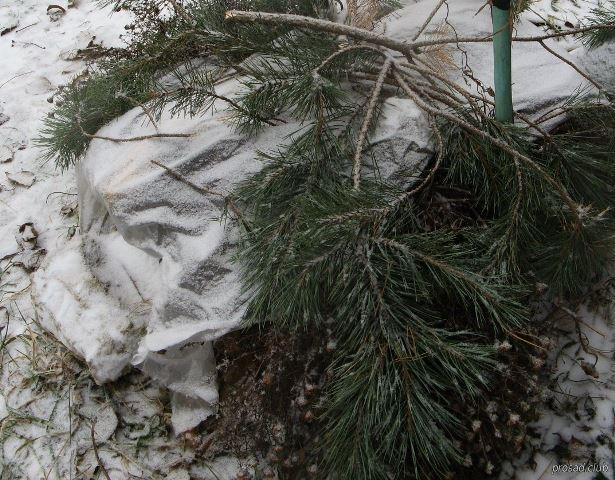
Young bush
Young stems are huddled high, bent to the ground, laid on dry spruce branches and wrapped on top with agrofibre. Lutrasil or roofing felt can be used as insulation. A wooden box can be placed on top of the plant.
White clematis
Vines blooming on the shoots of the past and new years are usually removed from the support and slightly twisted. The stems are placed on a support made of wooden blocks. From above they are covered with dry sawdust or spruce branches. Then - roofing material or lutrasil.
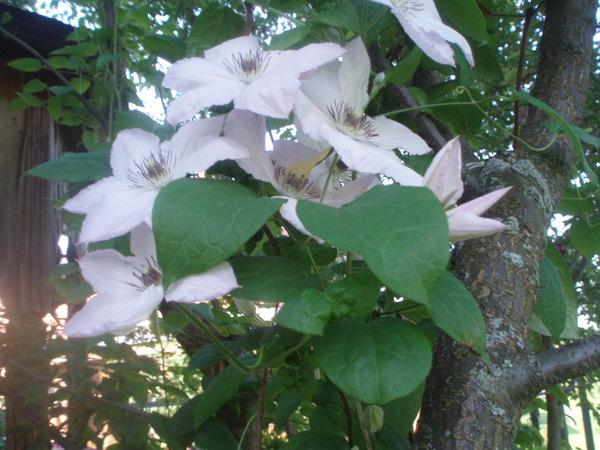
Small-flowered
If adult lianas are left on a support, then at the base of their stem they are sprinkled high with earth. The plant itself is wrapped several times with agrofibre. Such material is highly breathable and does not allow the plant to dry out.
Manchu
In this variety of clematis, all the stems are removed before wintering, leaving hemp up to 20-30 centimeters high near the ground. Before the onset of frost, the plants are completely sprinkled with a light earthen mixture (sand, peat, sawdust) and covered with roofing material.
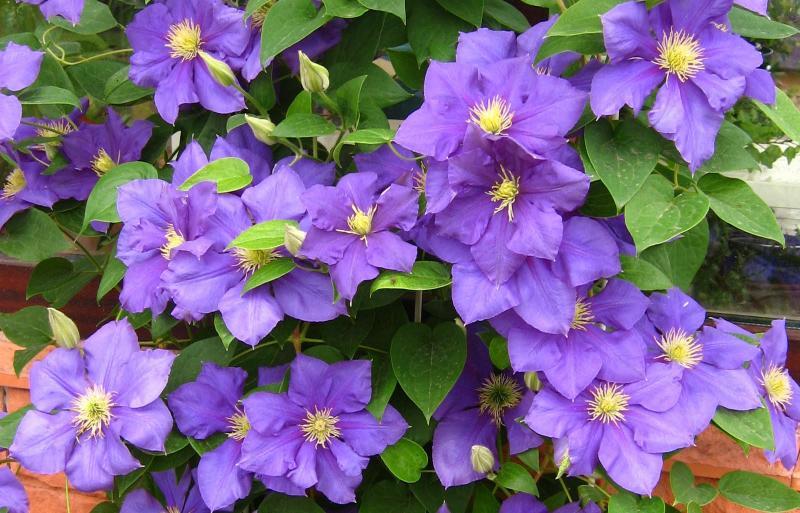
How to prepare a clematis planting site for wintering
Before winter, the bushes must be treated with fungicides and sprinkled with earth with the addition of wood ash. Such treatment will save clematis from fungal diseases.
Soil processing in the near-barrel circle
The land near clematis is treated with Fundazol. In the open ground there are many fungi and other microorganisms that are dangerous for the plant. To destroy them, within a radius of 50 centimeters from the stem, the soil is watered with a disinfectant solution.
Disinfection of soil
For the cultivation of the land and the stem, not only fungicides are used, but also copper-containing preparations (copper sulfate). It is advisable to use the following agents for soil disinfection: Fitosporin M, Fitop Flora C, Fundazol.

Hilling soil
The soil around the stem is loosened, a bucket of peat and sand, 200 grams of wood ash is added and the stem is sprinkled with this mixture. If the shoots rise 30 centimeters above the surface, then they are completely covered with soil mixture.
For hilling in the ground, you can mix a little rotted humus. The organic additive will not only protect the plant roots from freezing, but also provide them with nutrients. Hilling is carried out at a height of 30-40 centimeters.
Treatment of plants from pests
To combat pests, the bases of the stems can be painted with a solution of lime before wintering. For five liters of water, take 0.5 kilograms of quicklime. As a prophylaxis against pests, clematis can be sprayed with a solution of Bordeaux mixture. The same preparation is used to irrigate the ground near the stalk.
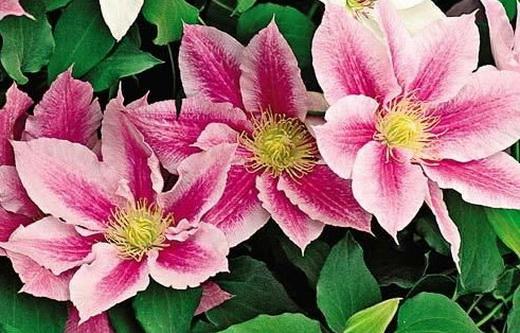
To combat rodents, baits, mechanical traps are installed near the vines, and pepper is sprinkled on the base of the stem.
How to unhook the vines from the support
Before winter, the branches of the plant must be carefully removed from the support. To do this, first, all dry leaves are removed from the stems, then the plants are untied from the support, the processes entangled behind the fence are cut off. By unhooking the clematis from the support, you can prune the plant at the same time. The twigs are slightly shortened during the removal process, leaving a stem at least 1.5 meters long.
In order to make it easier to care for clematis in the fall, it is advisable to tie it to a support only on one side in the spring.
With this method, the branches are not twisted around the pipe, but only tied to it with strings.

Methods for warming plants for the winter
Before wintering, it is advisable to insulate the bushes so that they do not freeze and do not come out. These vines are afraid of frost and excess moisture. The shelter for the winter should provide air access, be warm, dry and not wet.
Hilling
Clematis, which are completely cut off before wintering, leaving only low stumps, are piled up with earth mixed with peat and sand. Above the stems, you need to make a high mound (from 30 to 60 centimeters).
Combined Shelter
Completely cut stems of plants can be insulated not only by hilling, but also covered with agrofibre or roofing material from above. You can sprinkle an earthen mound with sawdust, dry branches, or place a wooden box above it.
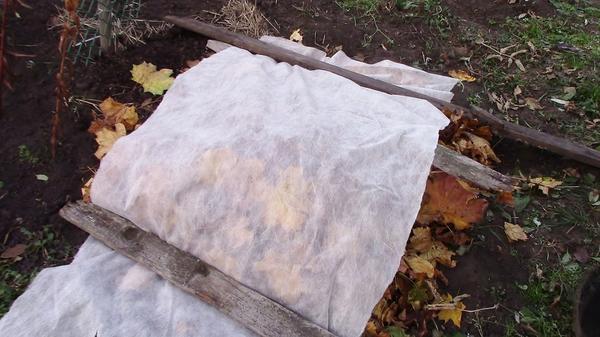
Air shelter
Clematis, which blooms on last year's branches, is covered with an air method. The plant is covered with earth, then removed from the support and folded. Dry twigs or spruce branches are laid under the bottom.
Above the liana, metal or wooden arcs are installed on which roofing material or agrofibre is pulled.
You can cover the plant with a wooden box, and sprinkle it on top with spruce branches. From above, this structure is covered with roofing material or agrofiber, leaving holes for ventilation on the sides. The main thing in this method of shelter is to leave an air space between the branches and a protective insulation.
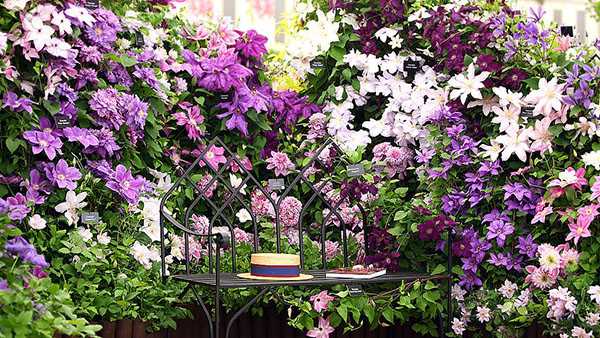
Shelter of individual bushes
In order to preserve clematis in winter, individual bushes can be bent to the ground, laid on wooden slats or dry branches, and covered with a box or roofing felt on top. It is imperative to make holes for air ventilation.
Group shelter of clematis
Vines growing in a row can be insulated in a group. To do this, they are removed from the support, bent to the ground, laid on dry branches or spruce branches, and metal arcs are placed on top, onto which roofing material or agrofibre is pulled.
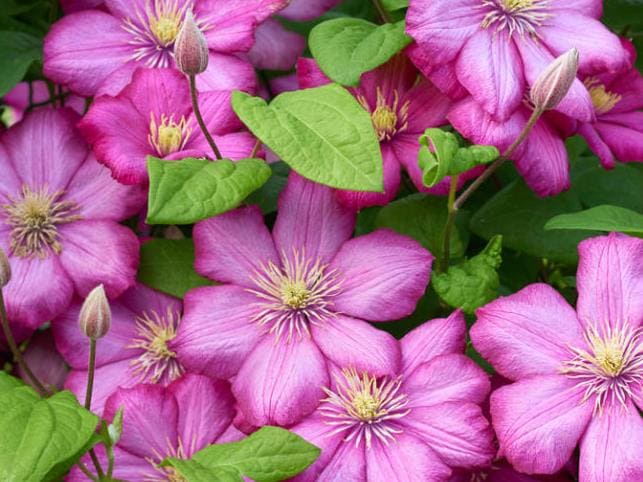
Reinforced insulation
To prepare for the harsh winter, the vines need to be thoroughly insulated. Plants are removed from the support, placed on a thick layer of spruce branches or dry sawdust. Metal arcs are installed on top, agrofibre is pulled, another layer of spruce branches is laid on top and again covered with roofing material. You can build a wooden structure over the shelter.
How to process clematis for the winter
Before wintering, the stems need to be processed to protect them from pests. The most accessible drug is copper sulfate. A solution is prepared for processing: 50 grams of the substance is diluted in 5 liters of water. Immediately after preparation, the bush is sprayed with this agent. Vines are processed in dry, calm weather. This remedy will protect clematis from the development of mold in winter.
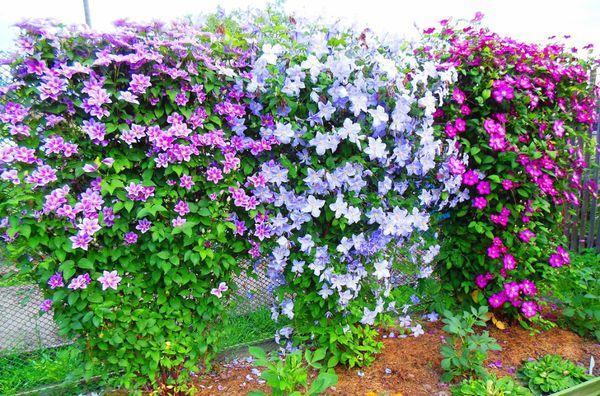
The liana will be protected from fungal microorganisms by treatment with iron vitriol. Such a remedy will additionally feed the bushes with iron trace elements. A solution is prepared for spraying: 30 grams of ferrous sulfate is dissolved in 10 liters of water. The stems of the plant are irrigated with liquid, a little mixture is poured under the root.
Clematis care in winter
In winter, it is advisable to constantly monitor how sheltered plants behave. If icing appears on the branches, they additionally need to be wrapped with a layer of warm reeds or straw, and wrapped on top several times with agrofibre.
If the plant sweats, on the contrary, you need to remove the extra layer of shelter, ventilate the stem, wrap it with breathable material. In winter, more snow can be poured onto the structure, under which the plant will be warmer. During a thaw, you need to ensure that moisture does not accumulate at the stem, otherwise the clematis will wither and rot.
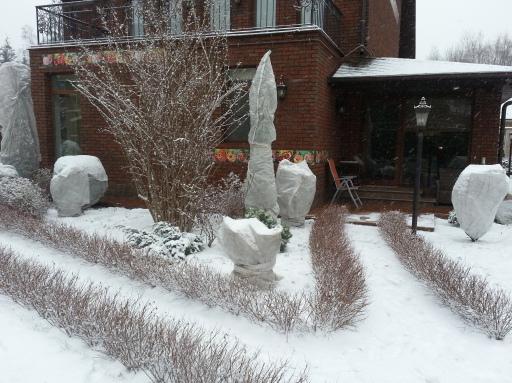
Different regions and shelter of clematis
Each region has its own way of sheltering plants. In the southern latitudes, the bushes are only huddled high with earth, and in the northern regions they are insulated with sawdust, spruce branches, roofing felt or wooden protective structures are made from above.
In the suburbs and the Middle Strip
In the Moscow region, clematis are insulated by hilling, and on top they are covered with agrofibre or roofing material. If the plants are removed from the support, they are laid on dry branches or spruce branches. Then a box or metal arcs are installed on top, onto which agrofibre, lutrasil, film or roofing material are pulled.
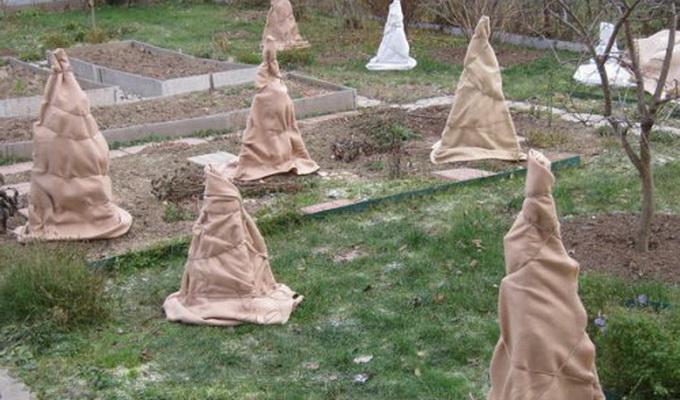
In the Volga region
In the Volga region, when warming clematis for the winter, they make sure that they are not heated with water. For this, special grooves are made to drain water, and high wooden slats are placed on the ground, on which the stems removed from the support are laid. Then the branches of the plants are covered with roofing material or lutrasil.
In the Leningrad region
Clematis is removed from the support, folded on wooden slats, and then covered with agrofibre or roofing felt. You can insulate clematis with spruce branches, and cover it with a wooden box wrapped in foil on top.
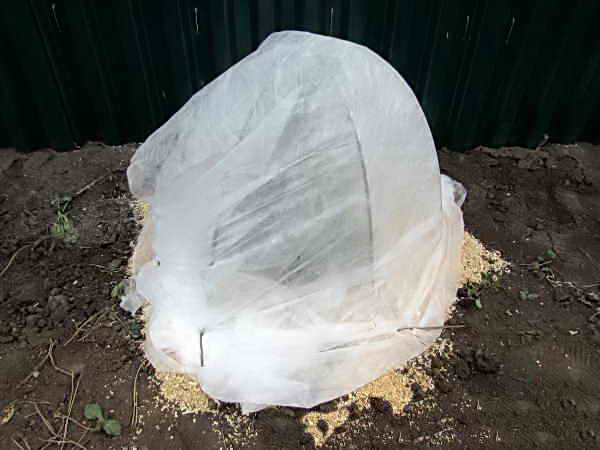
In the Urals and Siberia
In regions with cold frosty winters, clematis is thoroughly insulated. Plants are laid on spruce branches or sprinkled with sawdust, wrapped in agrofibre, and wooden structures are installed on top. They are also wrapped in foil. Then the shelter is covered with a thick layer of snow.
Taking shelter in spring
With the onset of spring, when severe frosts have passed, clematis slowly open. The shelter is gradually removed from April to May. Plants open during the day, in dry and sunny weather.
At first, clematis are only slightly opened for a couple of hours and allowed to bask in the sun, and they are insulated again at night. Plants need to be given time to adapt to new conditions. Then they remove the film, remove the dry branches, raise the vine and tie it to the support. The last thing to do is to remove the mulch from under the stem.
